Hormuz Valley of the Statues + Photos
Amidst the Hormuz island's myriad attractions, the Valley of the Statues emerges as a captivating destination.
Tucked away along Hormuz's southwestern coastline, this enigmatic valley beckons travelers with its mystical allure. Carved by centuries of wind and water erosion, the valley's surreal rock formations resemble ancient statues, shrouded in myth and legend.
Geography and History of the Hormuz Island
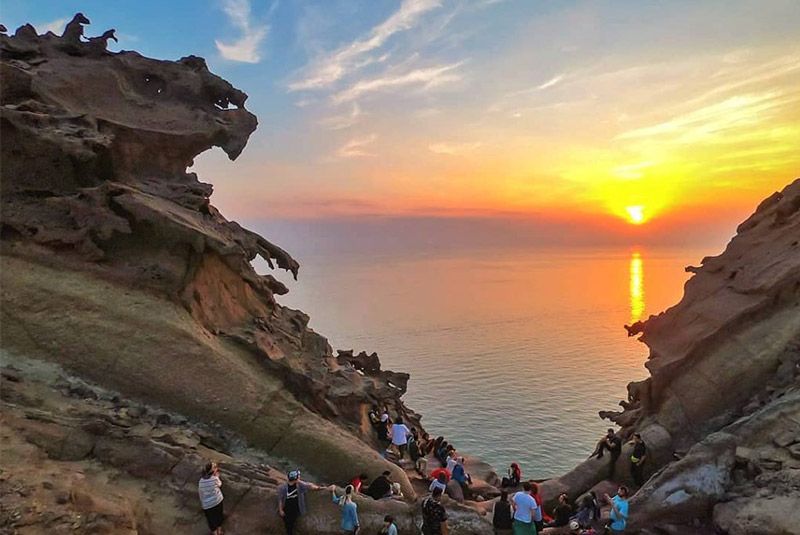
Hormuz Island, situated in the Hormozgan province of southern Iran, is a geological marvel with a rich historical legacy. Its strategic location at the entrance of the Persian Gulf has made it a significant hub for trade and maritime activities throughout history. The island's geological features are as diverse as they are stunning, offering visitors a glimpse into millions of years of natural history.
Geologically, Hormuz Island is estimated to be around 600 million years old, characterized by volcanic mountains, colorful hills, and salt mines. The island's vibrant red, silver, golden, and white sands create a striking contrast against the azure waters of the Persian Gulf.
From a historical standpoint, Hormuz Island has played a crucial role in shaping the region's history. Its strategic location has made it a coveted prize for empires seeking control over maritime trade routes. The island's Portuguese fortress, constructed in the 16th century by the Portuguese commander Albuquerque, stands as a testament to its historical importance.
Over the centuries, Hormuz Island has been at the crossroads of civilizations, witnessing the rise and fall of great empires. Its position along major trade routes has made it a melting pot of cultures and influences, contributing to its rich cultural heritage.
Today, Hormuz Island continues to attract visitors from around the world, drawn by its geological wonders and historical significance. Exploring the island's diverse landscapes and historical sites offers a unique opportunity to delve into Iran's storied past and appreciate the natural beauty of this remarkable destination.
| Related: Hormuz Salt Goddess Cave + Photos
Exploring the Valley of the Statues
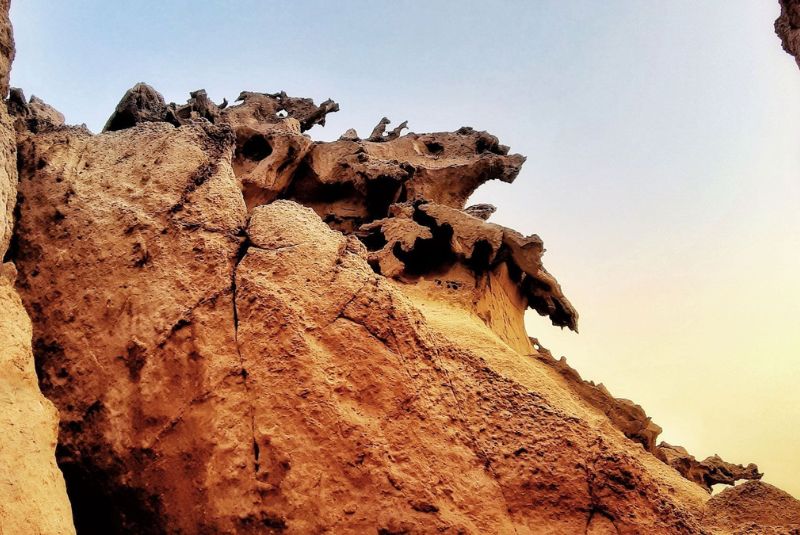
The Valley of the Statues, nestled on Hormuz Island in the Hormozgan province of Iran, is a hidden gem waiting to be explored. Accessible via a scenic route along the western side of the island, this captivating destination offers visitors a glimpse into the island's geological wonders and natural landscapes.
To reach the Valley of the Statues, visitors can embark on a journey along the picturesque coastal road that encircles Hormuz Island. From there, they can follow the dirt road leading to the southwestern mountainous part of the island, where the valley awaits. Although the journey may take some time, the breathtaking views along the way make it well worth the effort.
Once at the Valley of the Statues, visitors are greeted by a landscape unlike any other. The valley is characterized by its unique geological formations, shaped over millions of years by wind and water erosion. The rocky terrain is dotted with striking rock formations that resemble animals and mythical creatures, sparking the imagination of all who visit.
The geological history of the Valley of the Statues dates back millions of years, with each rock formation telling a story of its own. Erosion has sculpted the rocks into intricate shapes, giving rise to a myriad of statuesque figures that seem to come alive against the backdrop of the island's rugged landscape.
As visitors explore the valley, they are immersed in a world of natural beauty and wonder. From towering rock formations to hidden caves and gorges, there is no shortage of sights to behold. The valley's unique topography provides ample opportunities for hiking, photography, and exploration, making it a paradise for nature enthusiasts and adventure seekers alike.
In addition to its geological marvels, the Valley of the Statues also holds historical significance. The history of the valley is intertwined with that of Hormuz Island, with ancient civilizations leaving their mark on its rocky terrain. Today, the valley stands as a testament to the island's rich cultural heritage and natural diversity, inviting visitors to discover its secrets and unravel its mysteries.
| Related: Hormuz Portuguese Castle
Legends and Features of the Valley of the Statues
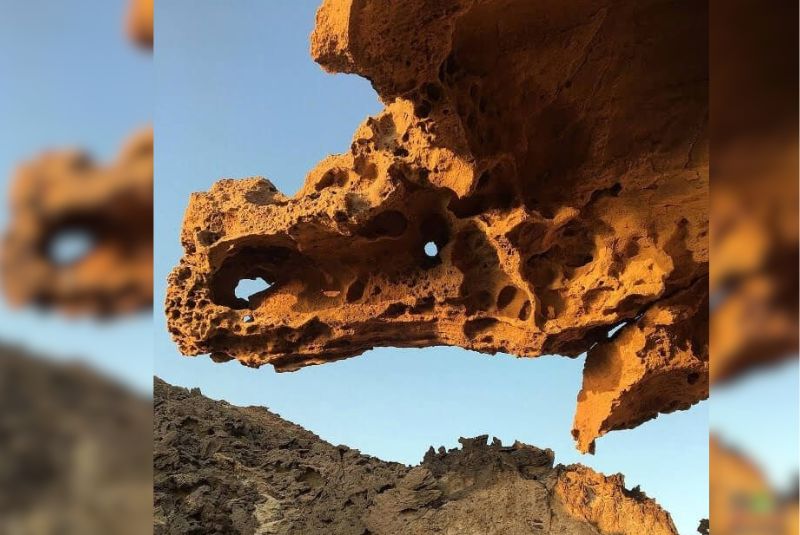
The Valley of the Statues on Hormuz Island isn't just a geological wonder; it's steeped in local lore and legends that add layers of intrigue to its already captivating landscape. According to locals, the valley has been a site of ancient rituals and mysterious occurrences for centuries. One prevalent legend suggests that the statues lining the valley were once living beings, transformed by powerful sorcery into stone sentinels that silently watch over the land.
Adding to its mystique, the valley's eerie atmosphere is palpable, especially during twilight when shadows dance across the weathered rock formations, casting surreal shapes on the ground. Walking through the valley, visitors can't help but feel a sense of reverence tinged with an underlying sense of apprehension, as if they've stepped into a realm where time stands still and ancient secrets whisper on the wind.
Amidst the whispers of legends, the valley's geological features stand as silent witnesses to its tumultuous past. Towering rock formations, sculpted by millennia of wind and water erosion, rise like sentinels guarding the valley's secrets. The rocks themselves are a testament to the island's geological history, bearing layers of sediment that tell the story of millions of years of geological upheaval.
One of the most striking features of the valley is its collection of natural statues, formed by the erosion of the rock into fantastical shapes resembling animals, mythical creatures, and human figures. These natural sculptures are a testament to the power of nature's artistic hand, inspiring wonder and awe in all who behold them.
As visitors wander through the valley, they'll encounter rock formations that seem to defy gravity, balancing precariously on narrow ledges, while others appear to have been carved by the hands of ancient artisans. Each formation tells a story, inviting visitors to imagine the forces that shaped them and the ancient peoples who once called this valley home.
| Related: Rainbow Valley on Hormuz + Photos
Hormuz Valley of the Statues Access Routes and Practical Tips
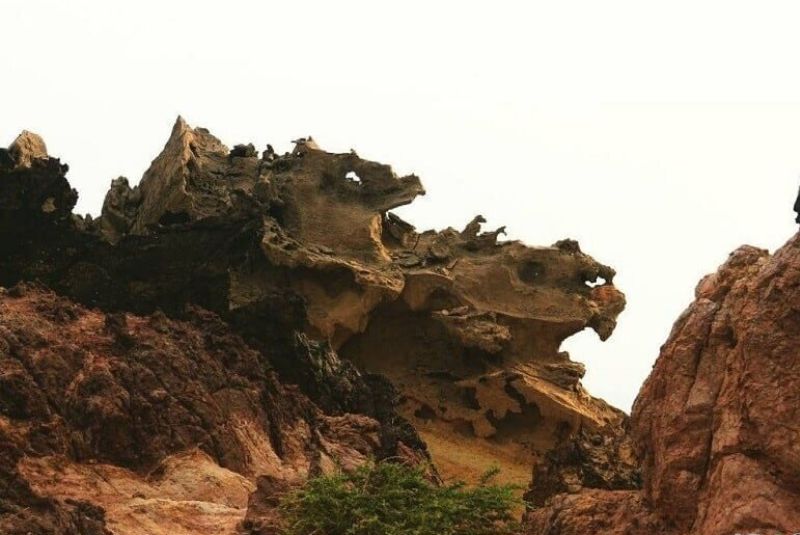
Reaching Hormuz Island, home to the enigmatic Valley of the Statues, requires a bit of planning but promises a rewarding adventure. The island is accessible by boat from both Bandar Abbas and Qeshm Island. From Bandar Abbas, visitors can catch a boat from Shahid Haqqani pier, departing every two hours starting from 7:00 AM, weather permitting. Alternatively, those coming from Qeshm Island can take a boat from Zakari Wharf, with departures at 7:00 AM sharp. It's essential to check weather conditions before embarking on the journey, as rough seas may lead to cancellations.
Upon arriving on Hormuz Island, reaching the Valley of the Statues location is relatively straightforward. Travelers can follow the road along the western side of the island, leading to the dirt road that provides access to the valley. From there, it's a leisurely half-hour walk to the beginning of the valley, where the captivating rock formations await.
For visitors planning to explore the Valley of the Statues, it's essential to come prepared with the right equipment and mindset. Comfortable walking shoes, sun protection, and plenty of water are must-haves for traversing the rocky terrain. Additionally, it's crucial to adhere to environmental conservation guidelines, such as avoiding littering and respecting the natural habitat of the area. While exploring the valley, take nothing but photographs and leave nothing but footprints, ensuring its preservation for future generations to enjoy.
| Read more: Chahkooh Canyon on Qeshm + Photos
Best Time to Visit and Nearby Attractions
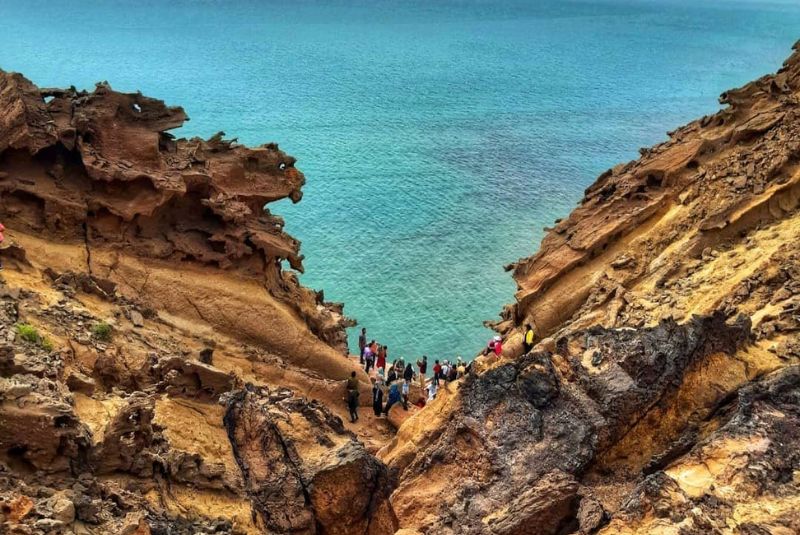
The ideal seasons to visit the Valley of the Statues on Hormuz Island depend largely on personal preferences and weather conditions. However, for most visitors, the best time to explore this captivating destination is during the winter months, from November to February. During this time, the weather on Hormuz Island is milder, with cooler temperatures making outdoor activities more comfortable. Moreover, the island experiences a higher influx of tourists during the winter months, resulting in crowded attractions and limited accommodations.
Spring and autumn are also suitable seasons to visit the Valley of the Statues, although temperatures can be warmer, particularly during the day. However, these seasons offer the advantage of blooming flora and vibrant landscapes, adding to the allure of the valley.
In contrast, summer is the least favorable season for visiting the Valley of the Statues, as temperatures soar and humidity levels rise, creating uncomfortable conditions for outdoor exploration. Additionally, the island experiences fewer tourists during the summer, allowing visitors to enjoy the serenity and natural beauty of the Valley of the Statues without crowds.
Aside from the Valley of the Statues, Hormuz Island boasts a wealth of other attractions worth exploring. History enthusiasts will appreciate the Portuguese Fortress, a remnant of the island's colonial past, located on the northernmost tip of Hormuz Island. This fortress offers insights into the island's strategic importance and architectural heritage.
| Suggestion: Persian Gulf Islands - A Traveler's Guide to Iran's Coastal
Finally!
The Valley of the Statues on Hormuz Island encapsulates a blend of natural beauty, intriguing legends, and historical significance. Its captivating rock formations, shaped by centuries of erosion, draw visitors from around the globe seeking unique experiences. With its eerie atmosphere and mysterious aura, the valley sparks the imagination and invites exploration.
Visitors to the Valley of the Statues can immerse themselves in local myths and legends, adding depth to their journey. From the mesmerizing animal-like rock formations to the breathtaking views of the Persian Gulf, every aspect of the valley leaves a lasting impression.
Share your story!
Comment below and let us know about your Experience.
Your story inspires others!


Comment
Leave a Comment